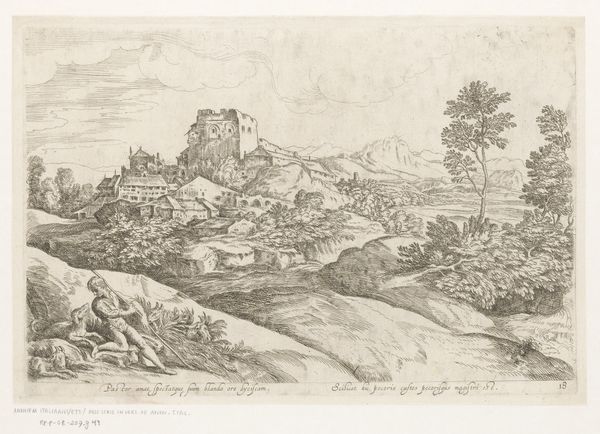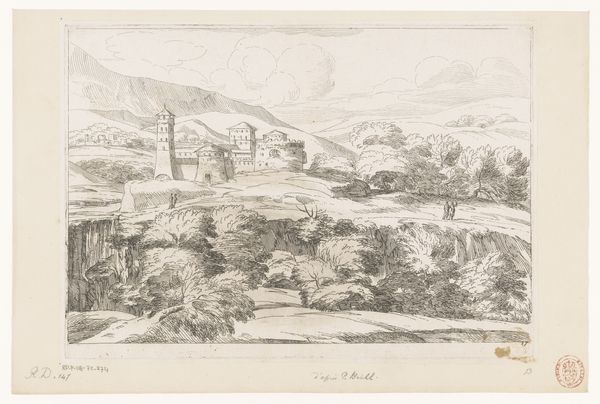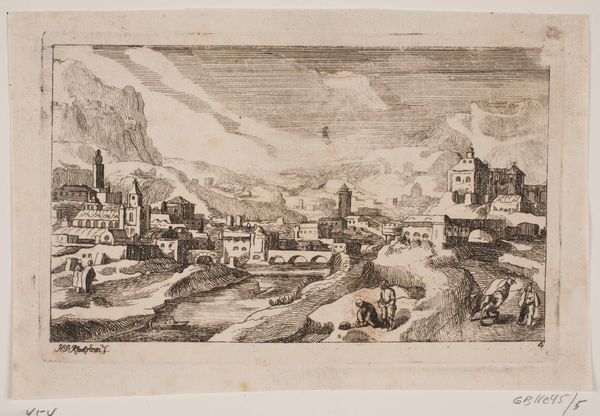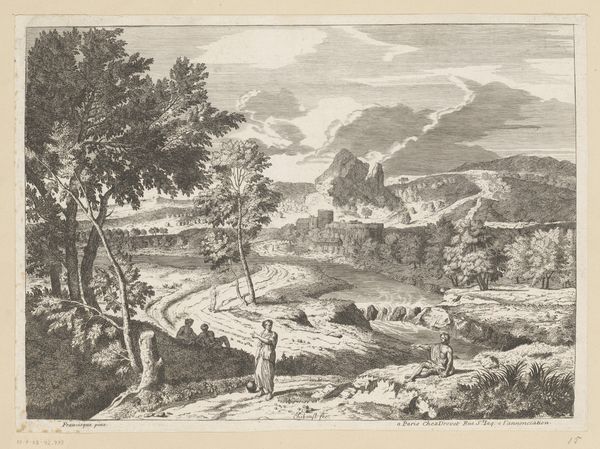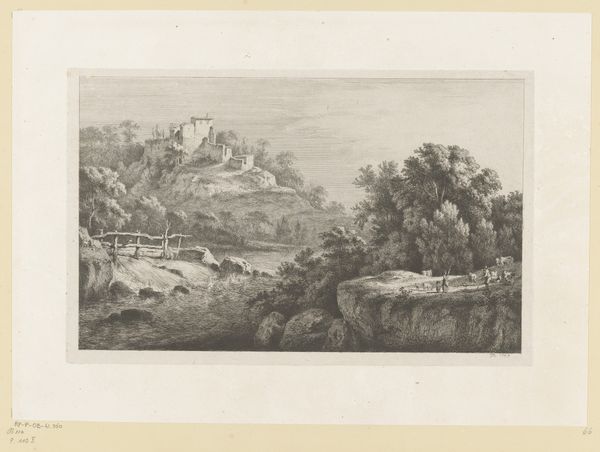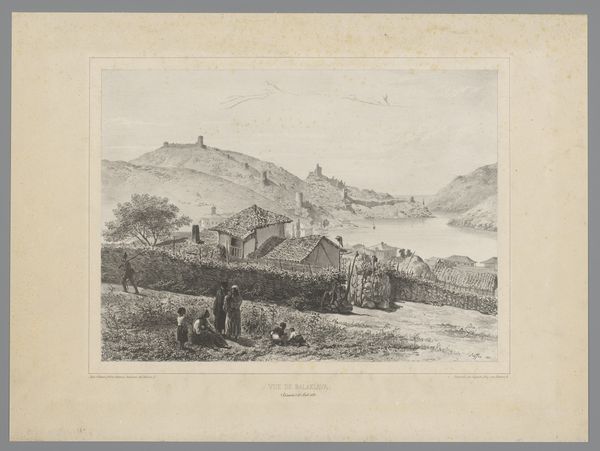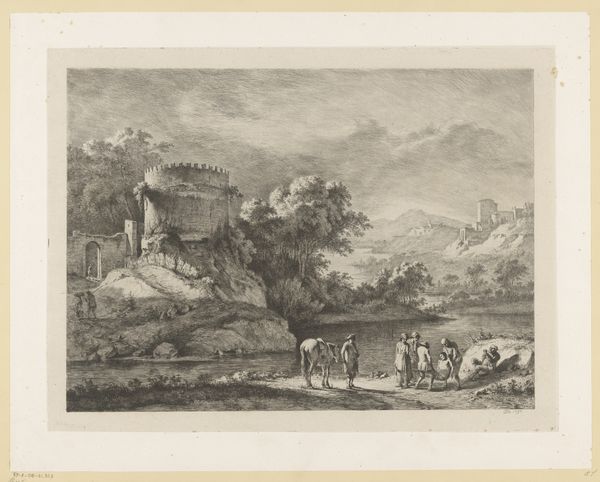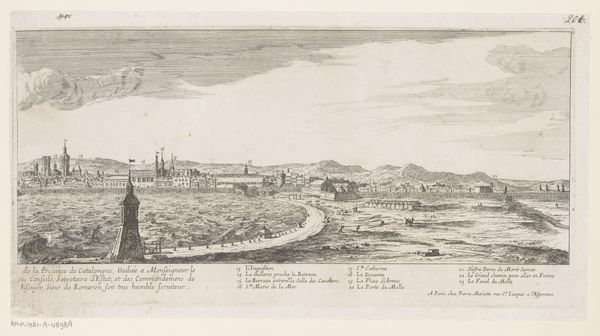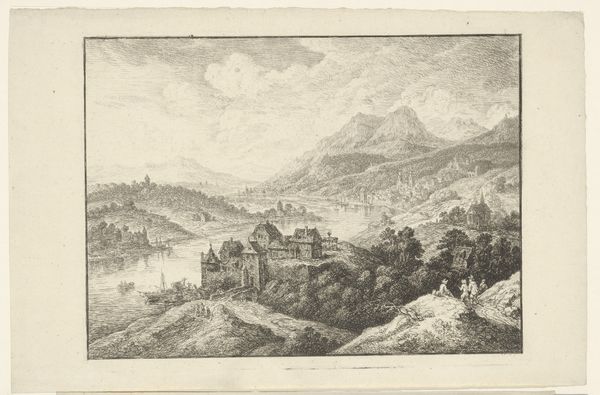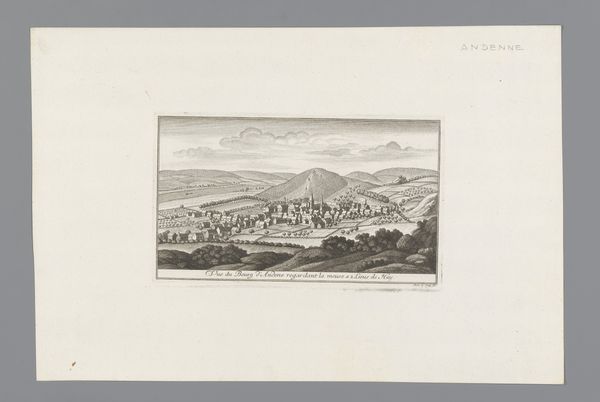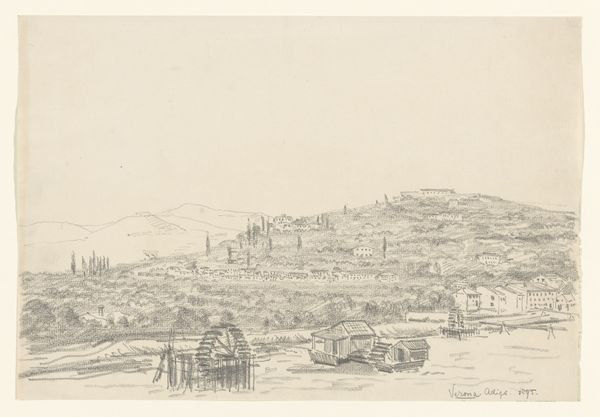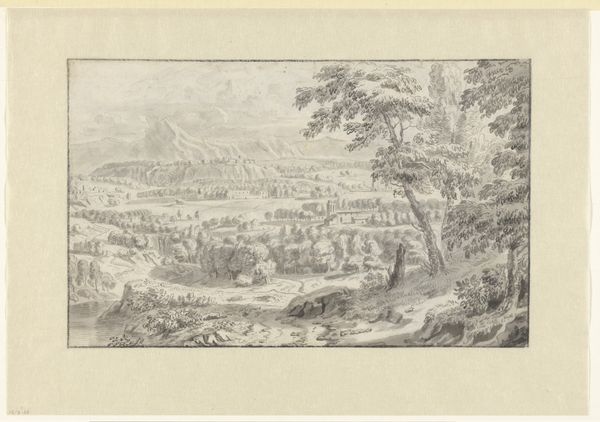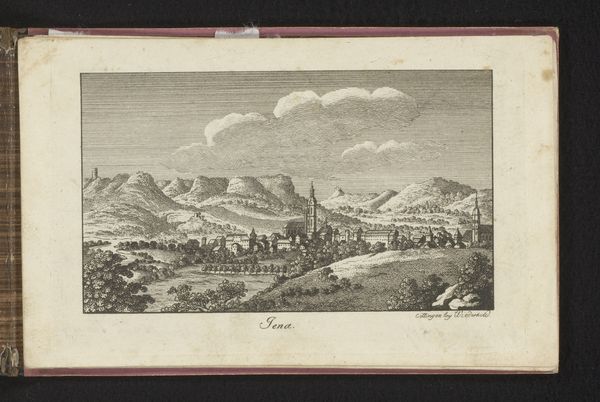
drawing, etching, paper
#
drawing
#
neoclacissism
#
etching
#
landscape
#
paper
Dimensions: height 151 mm, width 253 mm
Copyright: Rijks Museum: Open Domain
Curator: Today, we're examining Jean Jacques de Boissieu's "Gezicht op Champ-Verd, bij Lyon," created in 1764. It's an etching on paper, showcasing a landscape near Lyon. Editor: My first impression? A certain melancholic stillness pervades. The grey scale lends a somber yet elegant tone to the rural scene. It feels very ordered and precise. Curator: Indeed, Boissieu was working during the rise of Neoclassicism, and that order certainly comes through. Landscape at that time often reflected deeper symbolic relationships between humanity and nature. Think about the small figures – their positioning reinforces a sense of harmonious co-existence within a controlled environment. Editor: Yes, that becomes apparent. Notice the careful arrangement of forms, the play of light and shadow. The etching technique allows for very fine lines that almost sculpt the hillsides and the buildings clustered on the right. It has a distinctly structured feel, a contrast between nature's potential chaos and the imposition of human order. Curator: Look closely at the fortified structure atop the hill. Buildings in landscapes of this era weren't just decorative. They often represented power, authority, history, even refuge. And observe the peasants and workers closer to the foreground—they create a subtle contrast, showing us a range of social positions within this world. Even the dead tree signals cycles of decay, change, and persistence of memory. Editor: Interesting point. The dead tree could also suggest an absence— perhaps the fragility of existence within this ordered landscape? But overall, I think Boissieu is most successful with texture here; the soft clouding in the sky contrasted against the sharper details of the architecture below creates a satisfying visual rhythm. Curator: It is a captivating image, showcasing an ordered view of humanity embedded in its local terrain, as conceived in the mid-18th century. Editor: An orderly meditation realized in the tangible precision of printmaking, it seems to speak to a time when humans saw themselves as harmonious orchestrators, not disruptive conquerors, of the natural world.
Comments
No comments
Be the first to comment and join the conversation on the ultimate creative platform.
